Biden-Harris Cabinet Picks Show Shift to Low-Carbon Economy
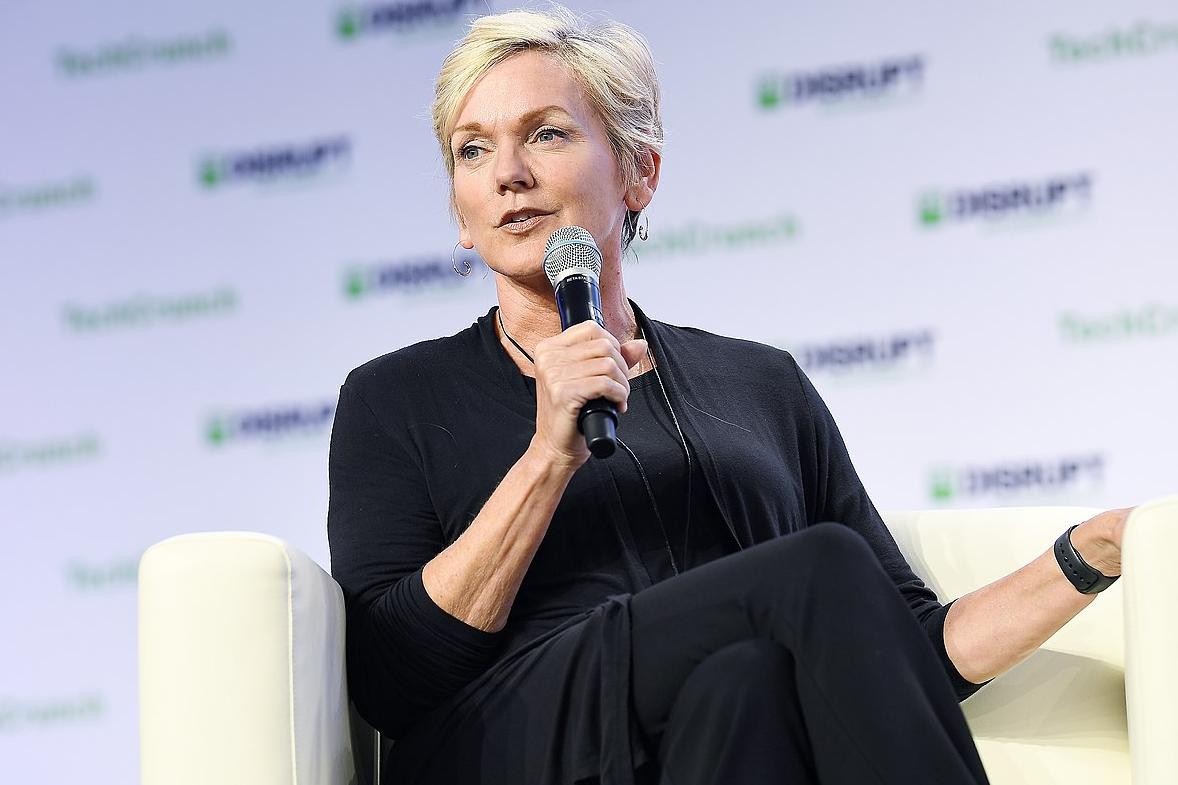
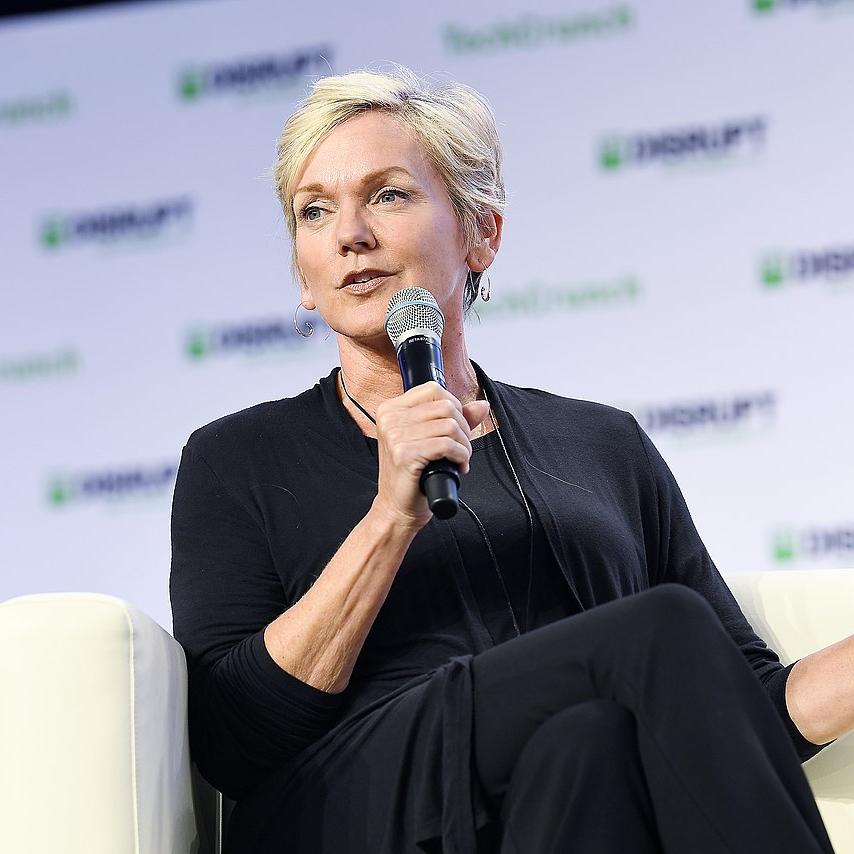
The Biden-Harris transition team has laid out four priorities in their Build Back Better platform for their incoming administration: COVID-19, economic recovery, racial equality and climate change. Arguably, those four priorities are intertwined, and addressing climate change in a just and equitable way will move the needle on all of them. The incoming administration has already picked an economic team with an eye on climate change and climate justice, and the recent cabinet picks for the energy and transportation are the latest team members to have a role in crafting a climate agenda.
An DOE pick that shows a focus on a clean energy future
The Biden-Harris team has tapped Jennifer Granholm (shown above), former Governor of Michigan, to lead the Department of Energy (DOE). Beyond being only the second woman to hold the position since the agency’s inception in 1977, she has been a vocal proponent of transitioning U.S. industry into a clean energy economy. In particular, she has experience with the auto industry and was governor during the auto bailout in 2009. Expertise in and relationships with the auto industry will be important as national priorities will encourage more electric vehicles (EVs) and charging stations. Further, it creates opportunities for job growth in those sectors, paving the way for a potential rejuvenation of Rust Belt economies.
Granholm’s stance on projects such as the Keystone XL and Dakota Access pipelines has won her praise from the various environmental groups. “Her selection would mark progress toward a cabinet capable of delivering on climate and environmental justice,” Greenpeace said in a public statement. “Jennifer Granholm has forcefully spoken out against both the Keystone XL and Dakota Access pipelines and advocated for shifting investment from oil and gas to renewable energy solutions. That’s the kind of leadership the Department of Energy has been sorely missing.”
The largest share of DOE’s budget goes to its nuclear programs, but the department also has jurisdiction over fossil energy, renewable energy, energy efficiency and electricity. The Biden-Harris ticket pledged to reach net-zero emissions in the U.S. by 2050, and that will not be possible without the engagement of all facets of the energy sector. A critical component of the department’s work is in research and development and deployment (RD&D): both in the national laboratories across the country that it manages as well as in the technical assistance and funding it gives to states for a wide range of projects. And while the Obama administration’s Clean Power Plan to cut emissions from the electric sector was a policy driven by the Environmental Protection Agency (EPA), close coordination with DOE is essential to make any successor to that plan work.
For transportation, looking beyond merely automobile emissions
Former presidential candidate and South Bend Mayor Pete Buttigieg is set to be the next Secretary of Transportation. As mayor, he advocated for more rail transit and the deployment of EVs and related infrastructure; as a presidential candidate, he spoke often about climate change and infrastructure. He would also be the youngest Biden-Harris cabinet member and the first openly LGBTQ cabinet secretary in history.
During his presidential campaign, Buttigieg's climate action platform included calls for ending subsidies to fossil fuel producers, net-zero emissions for all vehicles - including heavy trucks, ships and aircraft - and setting a price on carbon.
The U.S. Department of Transportation (DOT) is responsible for the nation’s roads, bridges, airports and railways. When we think of emissions, we correctly tend to think of the emissions that come from driving and operating vehicles.
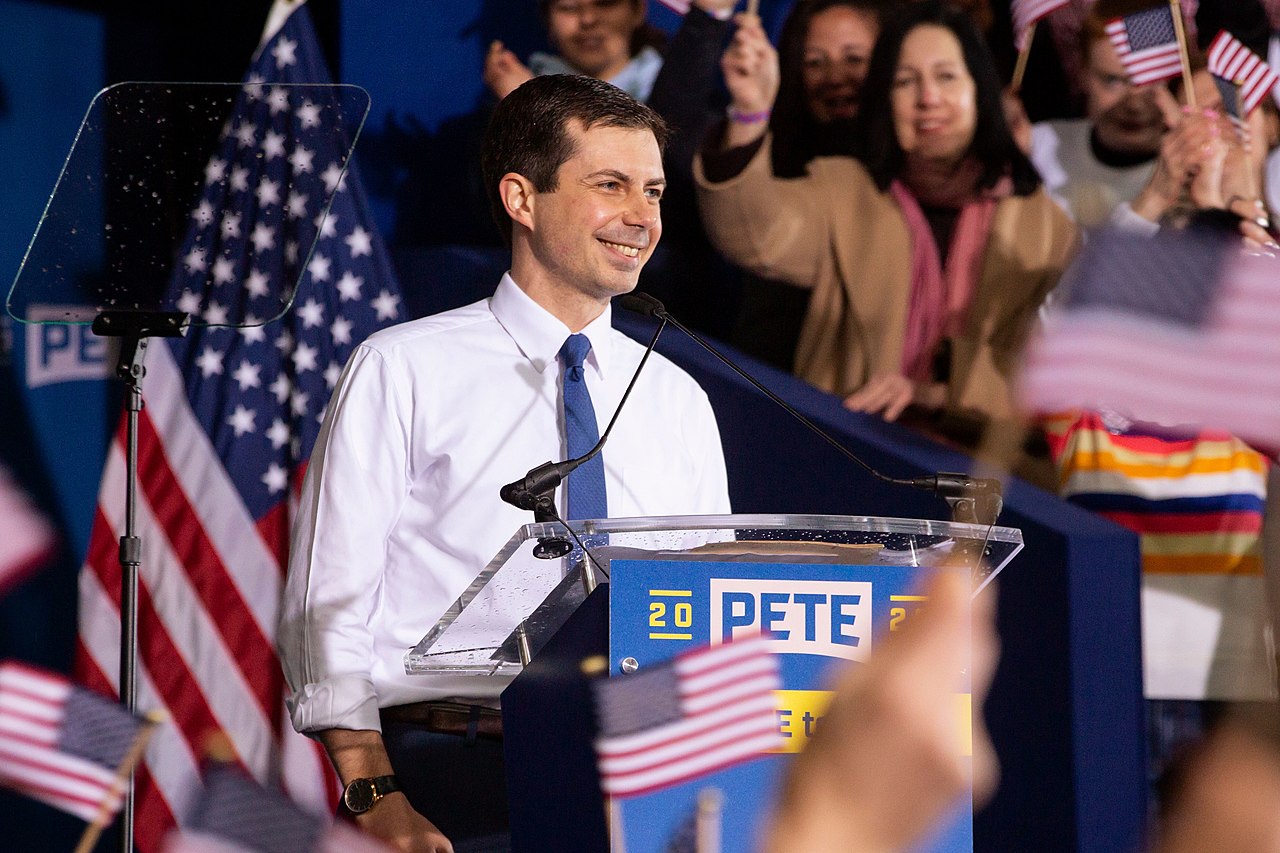
But there is another component that is often left out of the conversation: the emissions related to construction and maintenance. State DOTs receive huge sums from the federal agency through several different mechanisms, and those funds have, in the past, been tied to policies that have taken priority at the federal level.
For example, in 2008, DOT sponsored research into the climate impacts on transportation infrastructure and the agency subsequently directed states to operationalize climate change considerations in their state highway plans. It is likely that the Biden administration will require climate-related efforts to again be tied to federal funding.
The Biden-Harris team’s priorities: tying it all together
The largest connection between these two agencies is the future of electric vehicles, with both having a stake in the development and deployment of the technologies and infrastructure - through RD&D funding, technical assistance, and policy directives tied to assistance. But there is another throughway; climate change is a critical component to the industries overseen by both agencies. Transportation and electricity are the two biggest greenhouse gas emitters in the U.S., at 28 and 27 percent, respectively. The EPA will also play a role as that is the agency that sets vehicle emissions standards.
Any attempt to meet a net-zero target will require considerable work by both agencies. Further, with a transition to a clean energy economy, both sectors will need to help train and support workers for that new economy. Moving from fossil fuels and traditional methods of construction and operation to clean energy and sustainable infrastructure jobs will mean further coordination with such agencies as the Department of Labor as well.
Tackling climate change will require the engagement of every aspect of the American economy and government, but that also means opportunities to shift to more efficient, cleaner ways of doing things. With an eye on meeting a net-zero emission goal, DOE and DOT can help build and maintain transportation and energy infrastructure to be more resilient to the climate change effects we already experience while at the same time, use more sustainable means and methods that won’t add to the emission tally. Energy efficiency - in both transportation and electricity - means using less energy (and thus reducing emissions) to perform the same task.
With climate action in mind, these two departments and their secretaries could provide an efficient blueprint for a Biden-Harris climate action plan that could help reduce emissions, build resilience and create new job opportunities.
Image credit of Jennifer Granholm: TechCrunch/Wiki Commons
A Note for Corporate Purpose Leaders: How to Ensure that Crisis Funding Doesn’t Happen at the Expense of Long-Term Needs


When COVID-19 hit this past spring, corporations as well as individuals sprang into action to respond to immediate needs. From PPE for healthcare workers, to technology for children who had to suddenly switch to virtual school, to basic food needs for unemployed families, the response was truly unprecedented. According to a Benevity Labs Special Report on COVID-19 Relief, more than 500 companies and 450,000 of their people drove $640 million in donations for crisis funding, as well as provided support through volunteering, small acts of goodness and corporate grants to 79,000 global causes in the eight weeks between March 1 and April 30.
Thankfully, the International Rescue Committee (IRC) has been well positioned to quickly respond to the crisis in the 40 countries we operate in globally. While we recognize that we are fortunate to be able to provide this kind of uninterrupted and increased support, our ability to address emergency needs as well as ongoing pre-COVID needs is not a coincidence. It is the result of long standing, trusted corporate funding partnerships developed over time, and built on trust and mutual understanding. As a result, we were not put in the position of funding immediate needs at the expense of long-term concerns.
But for many community nonprofits, funding has dried up completely, or has come up short, forcing them to make tough choices between pandemic-driven needs or ongoing lifesaving programs in the areas of child protection, health and hygiene programs and education. This does not need to be the case. Strong nonprofit-private sector relationships have the potential to ensure the long-term viability of nonprofits. Not only that, they can also help ensure a purpose-driven workplace culture for corporations, boosting engagement, morale and rallying employees around a common goal.
Following are the lessons we’ve learned over the years, and most recently during the COVID-19 crisis, about what it takes to ensure ongoing crisis funding for community nonprofits at a time of dire need.
Engage employees through donation matching programs
Having extra incentives in place is important to activate and engage employees to support crisis funding. While many companies already have some sort of matching program in place to encourage employee donations, an effective way to increase engagement is to double or triple corporate matching funds for a contained period of time. We know that when employers provide extra matching funds, it not only boosts employee giving, but also has the benefit of boosting employees’ trust and commitment to their employer. For example, Benevity’s engagement study found a reduction in employee turnover by 57 percent for those most deeply connected to their companies’ giving and volunteering efforts.
Provide flexible funding
In the midst of an emergency response, the most effective and impactful way a corporate partner can support an NGO’s work is to provide flexible funding that allows organizations to plug in resources where they are most needed, on a moment’s notice. Crises, by their very nature, make it hard for nonprofits to plan for what funds they will need or how they will use them. Quite understandably, corporate grant programs typically come with a laundry list of stipulations and requirements, with the good intention of making sure funding is used effectively. But during times of crisis, when a surge in crisis funding typically gets diverted to institutions handling immediate needs, many nonprofits suffer and struggle with things as simple as paying the electricity bill. Flexible and fast funding is key at times like this. IRC’s relationship with Tripadvisor is a great example of this: The relationship was built over time and serves as a model for why corporations should look at long term funding relationships when evaluating the nonprofit sector.
Of course, dispensing funds quickly also requires that companies have the right technology in place to make quick, flexible, funding decisions, and deliver the much needed crisis funding efficiently.
Beyond crisis funding, build shared value partnerships
In addition to cash donations, which are fundamental to a nonprofit’s ability to act and cannot be replaced, another way for corporations to provide support to their partners is to loan skilled staff. Added capacity and expertise can benefit organizations tremendously. While COVID-19 has caused a pause in many in-person volunteering opportunities, it has also given birth to many creative ways to support nonprofits virtually. For example, preventing the flood of misinformation that surrounds the COVID-19 crisis is a critical need for front line workers. Partnering with nonprofits to share technical and marketing expertise such as educating healthcare professionals and setting up websites and apps with educational content are important activities that can be done remotely.
Several of these trade situations were critical to our success during COVID-19. Signpost, a platform that provides crucial information to refugees and displaced communities through service maps, social media, websites and WhatsApp, was created in partnership by the IRC with collaboration and support from corporate partners like Google.org, Twilio, Microsoft, Box, Tripadvisor and Cisco. And delivery company Postmates has donated delivery credits to communities in the U.S., so that refugees can order essential items and groceries safely. Additionally, Tripadvisor launched a “Hotels for Health” program and AirBnB partnered with the IRC and other nonprofits with a new global initiative to provide free or subsidized housing for 100,000 COVID-19 responders.
Get creative using your company’s unique assets
In the COVID era many proven and longstanding strategies for in person fundraising and awareness building activities such as concerts, runs and galas, have been sidelined due to distancing measures. So, this is a time to get creative and work with corporate partners to brainstorm ways they can tap your unique business resources throughout the whole company, and partner and customer ecosystem to lend support. Recently, Humble Bundle, a digital storefront for video games, leveraged their large customer fanbase and platform to raise over $5 million for IRC and other partners as part of a promotional sale supporting charity. And Sotheby’s and Google hosted a unique online auction for a set of experiences with influencers and celebrities that can be experienced remotely over Google Meet, with 100 percent of the purchase price and buyer’s premium from the auction supporting IRC’s COVID-19 response in Europe and in the U.S.
Adopt a nonprofit
If your company hasn’t already identified community nonprofits that you give special attention to, now is the time. There’s no place like home, so while there will always be causes that become top of mind based on what’s happening in the world around us, look at the landscape of your community’s needs: Which nonprofits play a critical role supporting your community? Which complement your company’s expertise and your employees’ values? Which nonprofits are critical to support the secondary needs that arise after a crisis is over? Consider forming a special relationship with those nonprofits and committing to ongoing support of them through a variety of the techniques we’ve discussed and through others that you can determine together.
Corporations leading the way to develop strong, trusting, long term relationships with NGOs are crucial to the health and survival of nonprofits who cannot exist based on short term, one-time cash infusions. Adequate funding also supports nonprofits’ ability to track and measure the impact of their work, which in turn, creates an environment of trust and transparency where these relationships can continue. When corporate-nonprofit partnerships work, the benefits multiply. Nonprofits are better positioned to address the needs of those impacted most by a crisis, while being more secure about their ability to serve their communities for the long term. At the same time, corporations can exponentially increase the power and impact of their support for crisis funding, while also providing their people with more opportunities to engage in purpose-driven action.
Without flexible funding from our corporate partners, for example, IRC would not have been able to provide healthcare for pregnant women and newborns in Kakuma Refugee Camp in Kenya while also working to mitigate the spread of COVID-19. In Jordan, we would have had to choose between addressing COVID-19 and working with local clinics and pharmacies to ensure that medicines are still being delivered to those in need in the Azraq and Zaatari camps. And in places like Nigeria and Yemen, where famine is a major issue, IRC would possibly have had to put on hold programs to treat severely malnourished children. Fortunately, we didn’t have to make any of those choices.
When corporations and nonprofits are strategic and thoughtful about how they partner together to launch and boost crisis funding, both sides are stronger, more successful and better equipped to act both in the short and long term with purpose.
Image credit: Capri23auto/Pixabay
The Top 5 Clean Water Stories on 3p in 2020


Never has a year felt more momentous than 2020. But while our lives turned upside down in a global pandemic, water issues continued to make headlines. In fact, access to clean water became even more important when hand washing became a primary action to prevent the spread of COVID-19. And despite the fact that most of us have been at home for most of this year, climate change and its effect on water have not slowed.
Top headlines for water this year include issues from crumbling water infrastructure in the U.S. to frontline water utility workers and the impact of water on racial inequality. Being at home this year has highlighted our dependence on the delivery of essential services like water, electricity, and internet access, but it has also highlighted the deep divide between those with ready access and those without. Resilience to help us withstand the impacts of climate change depends on our ability to narrow that divide and address critical needs, and water plays a central role in that.
By highlighting both the deficiencies and the successes – all of which have an impact on access to clean water, for better or worse - the challenges summed up in these articles can hopefully set us up for greater success in 2021.
U.S. Water Infrastructure Has One Dam Big Problem:
Priorities were elsewhere, but while we weren’t looking, our water infrastructure continued to be tested by increasing pressure from climate change and population growth. Building resilience into the stimulus and recovery from COVID-19 could help catapult improvements in the sector. Floods and hurricanes tested our infrastructure this year, and the coming years will be no different – in fact, we can assume they will be even more intense.
The Clean Power Industry’s Growth Offers Lessons for the Water Technology Sector:
Tina Casey looked at some of the emerging technologies that have helped the transition to a clean energy economy. Taking a page from the innovation playbook shows how the water sector could transition to become more sustainable in the long run, both in developing new technologies and training a new workforce.
Why Energy Efficiency is Key to Reducing Climate Change Risks:
Just as the energy sector can serve as an example for transitioning toward a more resilient future, making the water sector more energy efficient not only reduces greenhouse gas emissions and utility and plant operating costs, but it can also help us save water. Connecting these two sectors is central to improved sustainability in both the energy and water sectors and can create market opportunities for more effective investments.
Utility Workers, the Forgotten Heroes of this Pandemic:
While frontline healthcare and food industry have rightly received much attention during the pandemic, we often forget about the electricity and water utility workers who have kept us all safe and connected while we stay at home. Utilities activated emergency protocols from the beginning, and water utilities, in particular due to many across the country have both small budgets and workforces, have faced challenges of keeping their workers healthy and safe.
Taking on Racism? Don’t Overlook Climate Justice:
Let’s not forget the social issues that are aligned with water scarcity and the lack of safe access to clean water. Racial injustice was brought front and center during the pandemic, and climate injustice is central to the problem. COVID-19, layered on top of extant environmental degradations in communities of color and low-income communities, such as the lack of access to clean water, have made this challenge more pressing than ever.
The pandemic has laid bare inequalities when it comes to water, but it has also highlighted the key places that need our investment going forward. Infrastructure, worker protection and training, climate change, and racial inequality—water runs through them all.
Image credit: PxHere
Global Health Systems Are Cracking: Can Public-Private Partnerships Offer A Solution?


Ambitions around public health are central to the United Nations Sustainable Development Goals (SDGs). Targets for 2030 include providing universal health coverage (UHC) and eliminating the epidemics of HIV/AIDS, tuberculosis, malaria and neglected tropical diseases (NTDs). Such an agenda would be a monumental feat even under the best of circumstances, and experts now worry the novel coronavirus pandemic will put the achievement of these health goals — and the rest of the SDGs — in jeopardy.
“COVID-19 is driving us even farther off-course from achieving the vision and promise of the 2030 Agenda for Sustainable Development,” U.N. Secretary-General António Guterres said at the World Health Summit, an annual global health conference.
Beyond the direct risks presented by the coronavirus, measures to control its spread are disrupting global and local health systems — putting millions at risk and hindering progress on health-related SDGs. Still, even in the midst of the pandemic, we’ve seen public and private partners achieve significant gains to advance public health. Africa was declared free of wild polio in August, after a lengthy vaccination and surveillance program led by governments, multilateral health bodies, and private-sector supporters. And last month, the leaders of 194 countries signed on to a global strategy to eliminate cervical cancer as a public health threat.
“We’re at a critical moment,” notes Trey Watkins, executive vice president of global health and corporate responsibility at GCI Health, and former health advisor in the U.N. Secretary-General’s office. “On one hand, we see incredible progress. But on the other, COVID-19 has reiterated that we have to evolve our ways of working and collaborating if we are to truly address some of the world’s biggest challenges.”
A similar message rang clear from experts at the World Health Summit in October: The piecemeal, largely siloed efforts so far employed to advance public health are no longer enough. A truly collaborative, global effort is needed not only to combat the pandemic, but also to ensure it does not erase decades of progress around health and well-being.
“Collaboration and innovation are the key ingredients to support countries’ efforts to recover from the COVID-19 pandemic and accelerate progress toward the SDGs,” Tedros Adhanom Ghebreyesus, director-general of the World Health Organization (WHO), said at the Summit.
This cannot be the sole responsibility of the public sector or multilateral bodies such as the WHO. Participation from the private sector — particularly companies in the healthcare industry — is critical, Guterres added. “We need global solidarity every step of the way,” he said. “We must join together as governments, the private sector, civil society and all partners.”
Public-private partnerships can strengthen multilateral efforts, even when government support is found wanting
Expert calls have not fallen entirely on deaf ears, as a record number of collaborative funding and programming initiatives launched in recent months to coordinate a global pandemic response.
The Access to COVID-19 Tools (ACT) Accelerator, for example, brings global partners together in a first-of-its-kind effort to accelerate development, production, and equitable access to COVID-19 tests, treatments, and vaccines.
For the first time, the WHO opened up funding channels to private individuals, corporations and institutions anywhere in the world through the COVID-19 Solidarity Response Fund, created in partnership with the U.N. Foundation and the Swiss Philanthropy Foundation. The fund had raised or committed more than $238 million — and disbursed over $220 million — as of November.
“Financial accessibility is one of the biggest barriers to health, both in the U.S. and abroad, particularly for marginalized groups,” said Loyce Pace, executive director of the Global Health Council and member of U.S. President-elect Joe Biden's COVID-19 Advisory Board. “Financial access and inclusion has to evolve from traditional corporate responsibility or philanthropy to a better way particularly in the age of COVID-19.”
To fulfill their responsibility to meet the moment, healthcare companies in particular must combine their capital with relationship-building that allows for the sharing of innovation and resources, both locally and at scale.
For example, the Medtronic Foundation is leveraging its own network of nonprofit and government partners to maximize impact and scale during this historic time.
"We’ve looked at how we can support the public-sector response through nonprofit partners that have existing relationships with governments,” Jessica Daly, director of global health for the Medtronic Foundation, told TriplePundit. “But we also looked at scale: How could we really contribute to efforts that were happening at scale?”
In addition to pledging capital to the WHO Solidarity Response Fund and the CDC Foundation, the Medtronic Foundation partnered with the WHO and CDC directly to place and activate funds in areas at greatest need. “It's been important for us to plug into existing platforms and then to also support coordinated public-sector actions so that we could be complementary and leverage the strength of our resources,” Daly said.
A six-year veteran of the Medtronic Foundation, Daly previously led partnerships for the CDC in areas such as HIV/AIDS prevention and the Ebola crisis in West Africa, so she understands what’s possible when the public and private sectors break down silos and come together. “I've seen from both perspectives — the perspective of the private sector and the perspective of the public sector — how much they need each other and the power of a strong collaboration, which is sometimes difficult to achieve and easier said than done,” Daly told us.
“In the case of an emergency or a pandemic, you need to be able to move with speed and agility,” she continued. “Sometimes the public sector is constrained in their ability to act quickly and to be nimble and flexible with their resources. At the same time, those simple, flexible, private-sector resources can't reach the scale and sustainability that the public sector can. When these are able to come together, it really shows the power of collaboration.”
From response to recovery: Closing gaps in the healthcare system
Calls to “build back better” from the COVID-19 pandemic have spurred national efforts to expand the social safety net and begin to decarbonize economies in the fight against climate change. Similar rallying cries are beginning to spread across the healthcare sector, as stakeholders call for recovery plans that root out and address existing shortfalls within healthcare systems.
In markets including the U.S., for example, the pandemic has laid bare existing disparities which leave broad segments of the population — namely rural communities, people of color and those with lower incomes — underserved. Overall, people of color continue to be more likely to contract COVID-19 and experience adverse health outcomes, and the American Medical Association — the largest group of doctors in the U.S. — recently recognized racism as a “public health threat.”
“COVID, in and of itself, is revealing the fractured way which people of color and underserved populations are experiencing healthcare,” Daly said. “Even with a lot of really well-intended efforts, we still haven't been able to make the progress we want to make in reducing disparities. This is where I think the public sector is such a critical collaborator with nonprofit organizations and the private sector …. because we need to make more progress than we've made.”
Similarly, on a global scale, some fear that so-called “vaccine nationalism” — countries refusing to participate in vaccine collaborations or taking steps to hoard vaccines for their own people — could hinder global efforts. “Let me be clear: Vaccine nationalism will prolong the pandemic, not shorten it,” Ghebreyesus said at the World Health Summit. “The only way to recover faster, be it lives or livelihoods, is to recover together.”
Pace of the Global Health Council agreed. “Who gets treated? Who will have access to treatments and later to a vaccine? This is a very important conversation, and there’s a real opportunity for companies to step out and lead in that way,” Pace said.
At the World Health Assembly, an annual meeting of global health ministers held in November, Dr. Bruce Aylward, senior advisor to Ghebreyesus, noted key points of progress stemming from the global Access to COVID-19 Tools Accelerator — including the development of rapid tests and life-saving treatments. But he noted that access differs widely across nations and within communities, warning the discrepancies could worsen without “urgent action” to close the ACT-Accelerator’s $4.5 billion financing gap.
The ways in which companies, nonprofits and communities come together on a fix could prove to be a testing ground for future collaborations around public health, and stakeholders already have examples to follow.
“The world is changing, and communities are demanding more of us than ever,” Watkins reiterated. “In the face of nationalism and inequity, we must unite in solidarity and purpose to nurture meaningful engagements and identify sustainable solutions.”
This article series is sponsored by GCI Health and produced by the TriplePundit editorial team.
Image credit: arrowsmith2/Adobe Stock
Tire Particles: Looking at The Big Picture Through (Very Small) Particles


As public concern over environmental pollution evolves and focuses on new areas, businesses continue to seek solutions. Some aspects of the problem, like cutting down on disposable plastic bottles or reducing emissions, have been studied extensively. Other areas, such as microplastics in the environment, are much newer and their implications are still being understood.
Found in oceans and waterways, soil and land ecosystems, and even the air, microplastics are most commonly associated with degraded plastic packaging and microbeads used in personal care products. Less known sources of microplastics in the environment include synthetic clothing fibers, which shed when laundered and enter the water system, and the tiny particles of tires that are released through wear and tear as more than 1 billion vehicles travel the roads each year.
The particles generated during the normal use of tires are known as tire and road wear particles (TRWP). These distinct particles are an approximate half-and-half mix of tire tread material and road pavement material.
Public awareness of TRWP and their potential impact on the environment and human health has been slow to develop. However, a report highlighted that TRWP might have an important impact on the presence of microplastics in the environment. Using a statistical model, the 2017 International Union for Conservation of Nature (IUCN) report estimated that “tiny plastic particles washed off products such as synthetic clothes and car tires could contribute up to 30 percent of the ‘plastic soup’ polluting the world’s oceans and — in many developed countries — are a bigger source of marine plastic pollution than plastic waste.” The IUCN report did not receive independent scientific validation, so it does not rank amongst the growing body of peer-reviewed scientific literature on microplastics; however, its publication marked an important increase in stakeholder interest in potential sources of marine microplastics.
Defining the known unknowns
Use of the phrase “could contribute” in that IUCN report is important. TRWP research is a relatively new field, and a complicated one. At its inception, TRWP consists of tire tread material combined with particles of road surface, resulting from friction. The particular composition of TRWP also complicates their potential “microplastics” label; with as much as 50 percent of each TRWP particle being road pavement material, TRWP are perhaps not a perfect fit with the definition of microplastics that we often read about in today’s environmental press.
However, TRWP can change as they move through the environment.
“The knowledge on particle properties is very limited, especially the possible changes of these properties during transport,” explains Dr. Stephan Wagner, who studies TRWP at Germany’s Helmholtz Centre for Environmental Research. “Our results suggest that … depending on the conditions of TRWP generation, we may expect different particle sizes and densities. Even more important is that our result suggests that these properties may change during aging of TRWP in the environment."
In addition, little is currently known about the environmental toxicity of TRWP, though an early study found that the risk of acute toxicity should be considered as low whether the particles are circulating in the aquatic environment or trapped in sediment. A more recent study has suggested that a degradation product of a tire chemical found in TRWP might be responsible for incidences of coho salmon mortality during storm events in the U.S. state of Washington, underlining the importance of continued research.
Growing the knowledge base
Dr. Wagner’s group is currently working to assess how quickly TRWP properties can change and identifying the factors that trigger these changes.
He also lists several other areas that are needed to develop TRWP research into a more mature science. Chief among the tasks ahead is to develop a consistent foundational platform for study. Researchers must validate and agree upon methods, tests, materials, and analytical tools, Dr. Wagner said.
Building on that foundation, he suggests that one focus of future research centers on the changes that TRWP undergo as they reside in the environment and their long-term impacts on ecosystems and human health.
Getting ahead of the issue
Although public awareness of the TRWP issue is low, key stakeholders in the tire industry have been supporting TRWP research over the past 15 years through the Tire Industry Project.
The project includes a network of independent scientists and an Assurance Group, who are tasked with ensuring that the research is relevant and on point.
Dr. John Spengler of the Harvard T.H. Chan School of Public Health is an Assurance Group member. He notes that the Tire Industry Project’s work on tire materials and end-of-life issues informs a comprehensive, proactive approach regardless of the state of public awareness.
“The Assurance Group builds credibility into the system,” Dr. Spengler told us. [The Tire Industry Project] wanted the Assurance Group to make sure the right questions were being asked and the right protocols were being followed.”
One especially helpful development is the effort to identify a unique chemical signature for tires, which could better enable researchers to establish standard test methods to determine if particles found in the environment came from tires.
Aside from environmental impacts, there is an important public health angle, Dr. Spengler added. Most of the particles are too large to penetrate deeply into the lungs if inhaled, but they could still be transported into the body through nasal passages. “Just because they are large particles doesn’t mean they are safe,” Dr. Spengler said, while also noting that larger particles tend to fall on the roadside and do not travel far through the air.
Nevertheless, it is still important to quantify the potential impact, he said. “In Tokyo, in Korea, and in parts of the U.S., millions of people are living within 100 meters of a road,” Dr. Spengler explained. “So for a subpopulation, this is very important.”
Prospects for a solution
There are some indications that researchers studying the effects of TRWP may accelerate toward a solution in the coming years. The first study supported by Tire Industry Project was published in 2010. TIP has placed its research in the public domain, and this year, the organization is taking the additional step of making all its research open access, so it is easily available to anyone, online.
Dr. Spengler also noted that the Assurance Group has recommended ramping up its activity by meeting more frequently and ensuring quality by bringing additional topical experts into the research network.
The initial study analyzed different methods for comparing particles to understand the specific physical and chemical characteristics of TRWP. Subsequent topics of TRWP research include additional work on testing methodology (to better identify and quantify TRWP in environmental sampling), as well as investigations on possible impact on aquatic life, the potential toxicity of inhaled particles, sediment and estuary studies, human health risk analyses, and studies relevant to urban environments. TIP’s study plan aims to complement the global state of knowledge on TRWP – seeking to answer questions raised by earlier research, delivered by TIP or others.
Drivers are already well informed on the safety aspect of driving with tires with the right tread depth, but there are important opportunities for reducing tire wear rate through driving behavior and vehicle maintenance that consumers are perhaps less well acquainted with.
TRWP is a topic that requires the engagement of multiple stakeholders, and scientific research provides industry, consumers, authorities and other actors with the evidence-base to better understand the potential impacts of TRWP, and consider what might be the most effective means of mitigation where it is necessary.
This article series is sponsored by the Tire Industry Project and produced by the TriplePundit editorial team. Members of the Tire Industry Project (in alphabetical order) are Bridgestone, Continental, Cooper Tire, Goodyear, Hankook, Kumho Tire, Michelin, Pirelli, Sumitomo Rubber, Toyo Tires, and Yokohama Rubber.
Image: Evgeny Tchebotarev/Unsplash
U.S. President Fiddles with Racism While Massive, Months-Long Cyberattack Burns Businesses

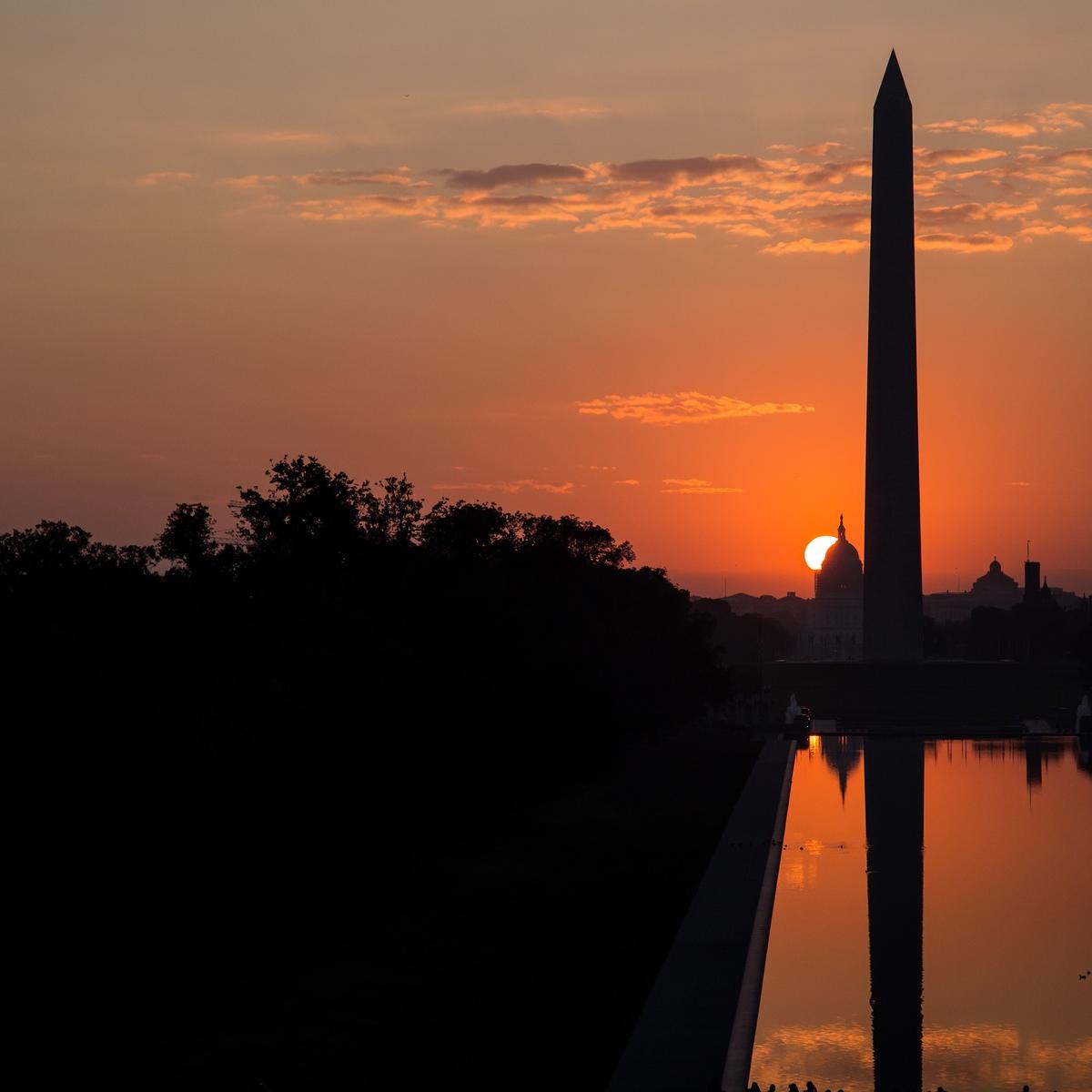
Corporate leaders who have been dithering about whether or not to rebuke President Trump on racism have just been served with a new, bottom-line justification for raising their voices. Over his final months in office, President Trump has enlisted the powerful resources of this office to wage a racially charged fight against the results of the 2020 U.S. general election, leaving the U.S. leaderless as a massive cyberattack struck federal agencies and businesses, too.
U.S. business leaders silent on president’s racist rhetoric
The president’s history of using race to raise his public profile has been well documented, and corporate leaders have been largely silent every step of the way. In 1989, Trump positioned himself as a law-and-order advocate by calling for the death penalty in the case of a white female jogger who was allegedly raped by a gang of teenagers. Five young Black teenagers, ages 14 to 16, were subsequently convicted and jailed for the crime, only to be exonerated and freed in 2002.
The five men received a $41 million settlement from New York City in 2014. By then, Trump, and his wife Melania Trump, had moved on to focusing the law-and-order theme on another Black man, then-President Barack Obama.
The Trumps became leading proponents of the “birther” conspiracy which, despite every fact to the contrary, held that Obama was not a natural born citizen of the United States and therefore not constitutionally permitted to hold the office of U.S. President.
Trump’s fixation on the birther conspiracy intensified in 2011, when Obama humiliated him in widely reported remarks during the 2011 annual White House Correspondents Association dinner. That reportedly set the stage for Trump’s decision to campaign for the Oval Office, beginning in the summer of 2015.
All during the 2016 general election cycle, Trump’s campaign rhetoric was marked by a running attack on various ethnic groups and immigrants. He drew support from people aligned with white supremacy and anti-immigrant ideology, and his focus on coal jobs reflected a long history of racial tension in an industry dominated by white males.
The pattern continued through his term in office, starting with the infamous “Muslim ban” and continuing through to first presidential debate in September, when white supremacists took encouragement from his now-infamous “stand back and stand by” comment.
Many high profile business leaders did protest the Muslim ban, family separations and other racially charged policies, though some had to be prompted by employee activists and other organizations. However, as a group they refrained from connecting the dots to overt racism, even when Trump ramped up his law-and-order rhetoric on the heels of the Black Lives Matter protests last summer.
“Law and order” president leaves corporate America exposed to ongoing cyberattack
The racism and law-and-order themes came full circle in the run-up to the November 3 general election. In widely reported remarks, Trump and his allies preemptively and repeatedly claimed that the election would be riddled with fraud. After the Associated Press called the race for Joe Biden on November 7, they continued to pursue these claims through 60 unsuccessful legal challenges, pivoting on a theme of massive fraud perpetrated mainly by Black voters.
Meanwhile, high profile corporate leaders refrained from directly rebuking Trump on his race-based election challenge strategy, with only a handful of exceptions.
A red flag came on November 17, when Trump summarily fired Chris Krebs, the director of the Cybersecurity and Infrastructure Security Agency in the Department of Homeland Security, after Krebs affirmed that there was no widespread election fraud.
The firing raised concerns that a key cybersecurity office would be left rudderless during the sensitive presidential transition period.
Those fears were borne out three weeks later, on December 8, Kevin Mandia, CEO of the cybersecurity firm FireEye, revealed that the U.S. had been hit by a widespread, state-sanctioned cybersecurity attack impacting both government agencies and private sector firms.
“Recently, we were attacked by a highly sophisticated threat actor, one whose discipline, operational security, and techniques lead us to believe it was a state-sponsored attack,” Mandia wrote, adding that “We are actively investigating in coordination with the Federal Bureau of Investigation and other key partners, including Microsoft.”
FireEye’s business is concentrated in the U.S., mainly in the all-important software and IT sectors as well as in government and educational fields.
The story continued to unspool over the following days with a focus on Russia as being behind the cyberattack. On Sunday, Reuters reported that “hackers believed to be working for Russia have been monitoring internal email traffic at the U.S. Treasury and Commerce departments.”
By Monday, the extent of the cyberattack began to take shape, with the email systems of the Department of Homeland Security and the National Institutes of Health also involved, with possibly many other government offices and private firms victimized.
The hack was apparently spinning out for weeks if not months before its discovery by FireEye - which means that Trump fired Krebs even as the nation was under this long cyberattack.
It is time for corporate leaders to step up and speak out
As of this writing, it is unclear how much damage has been done, and Trump has yet to acknowledge that a cyberattack of this scale took place on his watch. What is clear is that corporate America has adopted a business-as-usual approach to the Trump administration that fails to account for a president who is far from usual, and the security of the nation is now under threat.
Business leaders were forced to reexamine their own policies as the Black Lives Matter movement reenergized, but they never dug deep enough to force the president to stop fostering racial strife and start focusing on actual crises, including the COVID-19 outbreak and climate change in addition to matters of national security.
It is not too late to speak out, as the president apparently plans to enlist the resources of the entire Republican party to continue harrying and harassing the nation all throughout the Biden administration, leading up to a possible run for a second term during the 2024 election cycle.
Unfortunately, a new report focusing on the high profile financial institutions Vanguard and BlackRock from the organization Majority Action indicates that some business leaders are still not ready to act more forcefully on racism, despite all the recent corporate pledges on racial justice this year.
“The report finds that these institutions largely voted their proxies to shield companies from responsibility for harm to communities of color caused by major corporations,” Majority Action stated in an email.
The report also indicates that powerful financial institutions use their proxies to support the status quo among boards with no Black directors. According to Majority Action, BlackRock voted to support the entire boards of 163 out of 178 S&P firms that had no Black directors as of their annual meetings, and Vanguard voted to support the entire board at 166 companies.
In addition, the report found a pattern of voting against shareholder activists demanding more transparency.
“BlackRock and Vanguard voted to shield management from shareholder efforts to improve corporate disclosures of lobbying activities and political contributions,” Majority Action said, adding that “Corporate policy influence has substantial direct and indirect impacts on communities of color, including on issues relating to economic inequality, civil rights, and environmental justice.”
Those votes can make all the difference. Majority Action took note of 20 shareholder resolutions that could have passed with support from BlackRock, Vanguard and a third firm, State Street.
President-elect Joe Biden will take office as scheduled on January 20, but U.S. business leaders should not presume that the racial divisions sown by Trump will fade away, especially not if Trump continues to grab the media spotlight and radicalize his supporters.
Now more than ever, corporate leaders need to call Trump out on racism, insist that he buckle down and do his job, and push back vigorously against any future plans he may have for fostering a race war in this country.
Image credit: PxHere
In 2021, CEOs Can’t Stay on the Sidelines as Income Inequality Worsens


When we can finally take a huge collective breath and assess how it all went so wrong in the U.S. during this pandemic, one tragedy will long stand out: the fact that policymakers told millions of the most vulnerable citizens, and many small businesses who employ them, that they couldn’t work, yet provided almost no support to help them get by during the COVID-19 crisis. The result is a widening chasm in income inequality across the country.
You can see mounting anger in my home state of California, where many restaurants have invested in equipment such as tents and space heaters (yes, north of Los Angeles, it does get chilly here this time of year), only to be told outdoor dining must shut down over the next few weeks.
Meanwhile, the Twitterati, many of whom have the good fortune to work from home, continue to fret about quarantine weight, running out of baking recipes and asking what Netflix shows to binge next. For the essential workers who are coping with a stressful work environment so the rest of us can “stay safe,” while wondering whether their jobs will even be around in the next month or two regardless of the fact mass vaccination may be on the horizon, such kvetching comes across as tone-deaf.
Further, if you read the newswires, the rush of IPOs and booming stock market easily makes one think that COVID-19 is only a sideshow, not a human tragedy.
But millions of Americans risk threats of eviction, wait in long lines at food banks and face a bleak holiday season. It didn’t have to be this way — after all, our friends to the north and across the pond have received far more financial support to help them get through this time.
According to the research firm CivicScience, a recent survey shows more than 75 percent of consumers are worried about growing income inequality, and almost half of them say they are “very” concerned.
But that angst is largely missing within the C-Suite at major companies. In late October, the Conference Board’s latest Measure of CEO Confidence revealed a score of 64, almost 20 points more than what it measured in August. Seventy percent of the CEOs surveyed felt economic conditions were better here in the U.S., a huge turnaround from the measly 8 percent who believed so six months earlier. Yet while a third of these corporate leaders said they see a boost in investments and spending in the next year, around the same amount said they foresee reducing their workforce during the same period. Researchers at the Conference Board also measured a dip in consumer confidence akin to what CivicScience has found, according to a recent report.
That huge discrepancy in what CEOs now feel as opposed to what many workers are experiencing should have those same executives worried. Using that data as a lens to view the ongoing political divide in the U.S., business leaders will realize they need to stop measuring economic performance by how their portfolios are doing, as it’s clear we can no longer link the equity markets to how the economy is holding up.
Economic angst will lead to even more political divisions, as we witnessed last weekend in Washington, D.C. And as we’ve seen over the past several months, there’s a strong case to be made that political stability is crucial to long-term business performance.
But such an outcome won’t be possible if too many people still feel shut out once we emerge from the COVID-19 crisis — and assuming divided government is still the norm in D.C. for the next two years, there is only so much the incoming presidential administration can do.
For their long-term health, companies will be better off if they look at their balance sheets and find ways to keep workers employed and healthy. The alternative, an angry populace who can’t find gainful employment and have no safety net that allows them to survive, won’t bode well for U.S. society nor the economy.
Editor's note: To this point, the Washington Post has just published a story on how large "thriving" companies are also putting people out of work.
Image credit: Kelly Sikkema/Unsplash
From Zero to Hero: McDonald’s Turns to REBA for Huge Renewable Energy Deals

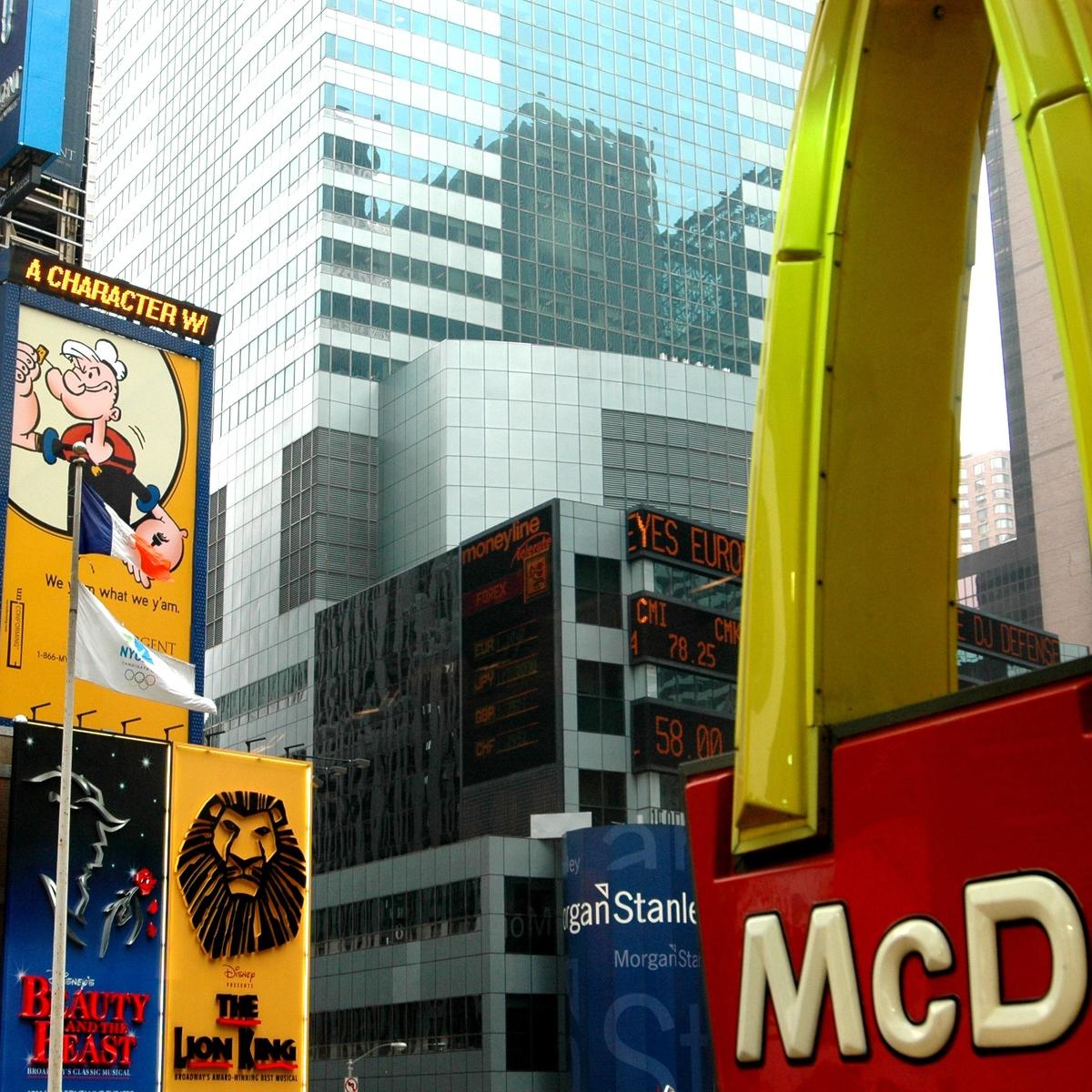
McDonald’s has been steering some of its overseas operations into renewable energy, and now the global food giant is turning its attention to the U.S. It’s not wasting any time, either. Two years ago the company was absent from the REBA large scale corporate energy buyers’ deal tracker, last year it appeared for the first time and made the top 10 cut, and just last week the company announced a trio of new deals that will keep it among the frontrunners in the coming year.
More renewable energy for in the USA
REBA is the Renewable Energy Buyers Alliance, a corporate initiative that formally launched in 2016 with the aim of investing in 60 gigawatts of clean power by 2023.
The idea of inter-industry collaboration on clean power grew out of talks among early corporate adopters facilitated by the World Wildlife Fund, BSR, Rocky Mountain Institute and World Resources Institute.
Tech giants typically dominate REBA’s annual Top 10 list of top large-scale renewable energy buyers in the U.S., but corporate clean power purchasing has diversified since 2016. McDonald’s sailed right into the number nine slot when it made its first appearance on the list in 2019.
That’s a nifty demonstration of the extent to which inter-industry collaboration can accelerate the renewable energy transition. With the help of GM and other early clean energy adopters, REBA provides large-scale energy buyers with support services, best practices, and lessons learned, which means that latecomers don’t have to reinvent the wheel when they decide to dip a toe into the wind and solar markets.
McDonald’s to U.S. renewable energy industry: more of this, please
McDonald’s also credits its experience in several European markets with its deep dive into the U.S. renewable energy scene.
Another element at work is the company’s support for the Science Based Targets initiative (SBTi). In 2018 McDonald’s became the first global restaurant company to have its greenhouse gas target approved by SBTi.
The 2019 renewable energy projects that earned McDonald’s a slot on the REBA list involve two virtual power purchase agreements for wind and solar farms in Texas, totaling a capacity of 380 megawatts.
The Texas angle may come as a surprise to some, considering that the state is a global epicenter of oil and gas production. However, in recent years the state has also positioned itself as a wind power leader, and its solar power industry is also beginning to catch attention.
The three newly announced clean power deals are also virtual power purchase agreements. They will cover two wind farms and a group of solar projects to be located in Illinois, Oklahoma, North Carolina and Ohio, for a combined capacity of 1,130 megawatts.
That puts McDonald’s in good company. By way of comparison, Facebook headed up the 2019 REBA Top 10 list at 1,546 megawatts, followed by Google at 1,107 megawatts and AT&T at 960 megawatts.
Why a virtual power purchase agreement?
McDonald’s expects that the total of just five power purchase agreements over the past two years will enable it to reach the halfway mark toward its goal of reducing greenhouse gas emissions 36 percent by 2030, based on 2015 emissions.
If that seems like a significant payoff for relatively little effort, it is.
During the Obama administration, the initial period of corporate renewable energy activity was characterized by rooftop solar installations or on-site solar arrays and wind turbines. Each company had to navigate unfamiliar technology and purchasing territory, and deal with permits and other administrative hassles as well.
Power purchase agreements relieved much of the burden on individual clean power buyers, by putting the arrangements in the hands of experienced solar and wind firms.
PPAs have been a key factor in accelerating clean power adoption, but they do little to address broader issues of affordable energy access. Typically, PPAs reward the site owner with lower electricity rates through their local utility. Other ratepayers covered by the same utility do not benefit.
Virtual PPAs resolve the access issue because they are not tied to a specific ratepayer site. The benefits of low-cost renewable energy flow to all ratepayers on the grid.
“These projects will not only provide more U.S. communities greater access to clean energy, but they will also stimulate local economies through job creation,” explained REBA CEO Miranda Ballentine.
REBA is already undertaking next-level action to promote clean power access in the coming years. The next steps involve reforming wholesale energy markets to take related technologies into account, including energy storage and demand-response programs.
The enduring power of clean power
The three new renewable energy deals are just part of the McDonald’s sustainability plan, and the company is not shy about articulating the need for swift action on climate change.
In announcing the new agreements, McDonald’s noted that climate action is all the more important in the context of the economic crisis fostered by the COVID-19 outbreak.
“Beyond the environmental benefits, we’re excited that the investments will also generate employment opportunities and tax revenue in local communities where the projects are located, including an estimated 3,400 short-term jobs, 135 long-term positions and $360 million in local tax revenues,” the company explained, adding that “McDonald’s will continue to address climate change and this global health crisis, as trying as it is, is an important reminder for companies like ours to keep a long-term mindset.”
It’s no secret that the President Trump has worked aggressively to undercut the work of corporations that support action on climate change. Nevertheless, REBA continued to grow in influence all throughout his term in office. Its powerful impact on corporate purchasing demonstrates the futility of propping up fossil energy interests in the coming years, especially not when the bottom-line tilts ever more sharply in the direction of sustainability.
Image credit: PxHere
Ford Places Its Future Bet on a Renewed Detroit


During the post-World War II era, U.S. automakers achieved far more than transforming the country’s transport systems and infrastructure (for better or worse). Companies like General Motors and Ford also had an impact on American architecture that reached its zenith during the 1950s and 1960s. Designers including Eero Saarinen and Charles Eames left their mark on Detroit and much of Michigan, whether it was at the massive GM campus in Warren, Michigan, or the iconic mid-century tables and chairs from the likes of Charles and Ray Eames that graced the offices of the Big Three automakers. Mid-century designers had a role in influencing the look and feel many of the classic cars of that era, such as the Ford Mustang Mach-E interior.
While New York and California are often credited for being the leaders in 20th-century design, Michigan served as the laboratory of such innovation, and to this day much of the state served as an open-air museum of architecture and design long before shows like Mad Men made the mid-century vibe cool.
Yet as much as the automakers’ contribution to making Detroit America’s wealthiest city in 1950, the industry also exemplifies the Motor City’s decline. There’s no shortage of analysis and commentary on Detroit’s long decline and its fitful recovery of the past decade. But one building that sums up Detroit’s rise, decline and hope for the future is scoring a second chance: Ford is investing in the majestic Michigan Central Station and its surrounding neighborhood.
A new beginning for a Detroit architectural icon
Corktown, a short hop from downtown Detroit, is a microcosm of American history. Settled largely by the Irish in the mid-19th century, Corktown then became home to Germans and eventually Maltese around 1900. Later on Latinos from Mexico and the U.S. Southwest moved in to work in the automobile assembly plants. After World War II, large tracts of the neighborhood were demolished to make room for factories, an investment that never occurred.
Looming over Corktown is Michigan Central Station, Detroit’s rail hub that bustled for decades until Amtrak’s last train departed in 1988. For years, the 13-story Beaux-Arts tower’s future was in doubt until Ford bought the building in 2018.
Now, the 107-year-old station and surrounding grounds will be the home of Ford’s future. Ford describes the complex as an upcoming “innovation hub” where the automaker will test new developments in transportation, including autonomous cars and all-electric vehicles.
From a rail hub to next-gen transport
So far, Ford appears to be keeping its promises. Recently the company and Detroit’s city government released a report describing how Ford has made good on the vast majority of the 40-plus community development commitments it made to the Corktown neighborhood. Part of this progress is by design. In 2016, Detroit’s residents voted to approve a measure requiring developers of large-scale projects to work with local residents so they have a voice in any such process.

The results could rival, if not surpass, the head-spinning grandeur of some of Silicon Valley's most vaunted corporate headquarters. This isn’t a campus gated off from Corktown. When the refurbished and rebuilt 30-acre complex opens as planned in 2022, open spaces and street art are among the features that will show Ford’s innovation hub will be not be imposed on Corktown, but integrated with it. Chain link fences, barbed wire and unsightly power lines will give way to bike lines, green spaces and architectural features that will harness natural light. And while Detroit may never say goodbye to the car, note that this complex’s parking garage will be offset from the rest of the buildings, encouraging workers taking up the more than 1,200 parking spaces to get their daily steps in as they begin and end their days at the campus.
“Few works of architecture better embody the past, present and future of Detroit like Michigan Central Station. This plan — led by Ford and forged in collaboration with local stakeholders — provides a vision for how the reimagined station, with the public spaces and buildings that surround it, can together become a unique and authentic destination for community members, innovators and visitors alike,” Vishaan Chakrabarti, the founder and creative director of Practice for Architecture and Urbanism, said in a recent Ford press announcement.
Image credits: Courtesy of Practice for Architecture and Urbanism (PAU)
The Top 7 Environmental Stories on 3p in 2020


As far as environmental progress in 2020 goes, the story is more circuitous than what 2019 leaders, CEOs and advocates may have imagined. We all know the coronavirus pandemic threw a wrench in daily strides toward sustainability such as recycling and single-use plastic use. Simultaneously, though, wildfires in Australia and the western United States were among the leading environmental stories pulling the urgency of climate action to the fore. The pandemic itself reminded nations and corporations of the import of global coordinated action, and the unfortunate absence of such needed systems of cooperation.
Despite some setbacks, it is possible to make a highlight reel of environmental progress for 2020. In the face of attempts by industries such as the airlines to step away from environmental commitments earlier in the year, some corporations have stepped into innovative advancements toward a circular economy. Switzerland made strides toward holding corporations responsible for their supply chains, even as the U.S. federal government rolled back environmental protections. And though the world has had to grapple with hurdles like increased deforestation, the sustainable agriculture and recycling industries persist toward better futures.
This year’s top environmental stories on TriplePundit reflect some of the greatest highs and the lowest lows. As we enter 2021, let’s review these peaks and valleys, not to dwell in the past, but to build to new heights, knowing now that we can achieve environmental gains even through the direst of crises.
It’s the End of Recycling as We Know It
While recycling systems were breaking down at the beginning of the pandemic, with workers staying at home and cities pausing curbside pickup, Tina Casey brought us the cutting edge innovations pushing the recycling industry into a new era — from recycling mixed paper to create reclaimed hydrogen to making rubber from industrial waste to transforming foam into durable and moldable plastic. The future of recycling may be unrecognizable to 2020 eyes.
Ocean Plastic Bike Grips: Another Step Toward a Circular Economy
This year also brought many environmental stories focused on the plastics circular economy, especially as marine plastics and ocean-bound plastics are being claimed and used to make durable products. One of these newly launched products is the Bontrager bike grip, whose core is composed of ocean-bound plastics from fishnets, trawls and ropes.
Pebble Mine Decision Hints at New Ally for Corporate Environmental Activism
Among her top environmental stories, Tina Casey also reported on the recent Pebble Mine decision that failed to win a key federal permit from the U.S. Army Corps of Engineers (USACE). In a detailed analysis, she shows how the USACE became a well-positioned ally for the Bristol Bay region of southwest Alaska, aligned with the stance of corporate advocates such as Tiffany & Co. Given the agency’s special, even growing, attention to sustainability and climate change, Casey argues the USACE could also become an ally for coming corporate environmental activism, especially as it carries a unique ability to control the pace of environmental progress.
Although the vote ultimately failed, Switzerland was poised to become the first nation to hold companies legally responsible for supply chain injustices and environmental abuses — what would have been a major step toward fulfilling the UNGPs. True, the law did not pass, but simply holding a referendum marks progress. Now all eyes are on the European Union, which published a draft directive last month mandating due diligence for its supply chains.
Palm Vs. Coconut Oil: What’s the More Sustainable Choice?
Nithin Coca brought reader attention to food oil consumption, investigating whether palm or coconut oil is more sustainable. Finding nuanced answers, he lands on the fact that, no matter the oil, consumers need to watch whether their food oils have been sourced ethically. While coconut oil has a lot going for it, Coca points consumer attention not primarily to a specific oil, but to whether a particular food oil’s sustainability credentials have been traced.
Burger King Dips Its Toe Into the Circular Economy
Burger King presents another recent example of a corporation forging ahead with sustainability goals during the pandemic. This fall, the fast food giant launched reusable cups and boxes on a trial basis in New York, Portland and Tokyo through a partnership with TerraCycle’s Loop initiative.
Marine Monuments Don’t Hurt, But Help, the Fishing Industry, Scientists Say
During this final year of the Trump administration, some protected sites have been opened to human activity. One of these was the Northeast Canyons and Seamounts Marine National Monument, off the coast of Maine, whose restrictions were lifted under the pretense that fishermen — hurting during the economic slump of the pandemic — would benefit. An interview with Dr. Enric Sala, National Geographic explorer-in-residence and founder of the National Geographic Pristine Seas program, reveals why fishermen in fact lose out without marine protection and win big as more preserves are created.
Image credit: Guillaume de Germain/Unsplash